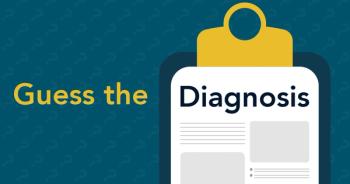Key takeaways:
- Otsuka submitted a new drug application to the FDA for centanafadine to treat ADHD in children, adolescents, and adults.
- The NDA is supported by results from 4 phase 3 clinical trials demonstrating statistically significant and clinically meaningful symptom improvements.
- Centanafadine is a first-in-class norepinephrine, dopamine, and serotonin reuptake inhibitor (NDSRI).
A new drug application (NDA) for the investigational compound centanafadine (CTN; Otsuka Pharmaceutical) has been submitted to the FDA to treat attention-deficit hyperactivity disorder (ADHD) in children, adolescents, and adults, according to a November 25, 2025, press release from Otsuka.1
The once-daily capsule is an investigational compound and a first-in-class norepinephrine, dopamine, and serotonin reuptake inhibitor (NDSRI), with NDA submission supported by results from 4 phase 3 clinical trials evaluating safety and efficacy across all patient populations. In studies, Otsuka reports CTN demonstrated statistically significant and clinically meaningful improvements in ADHD symptoms vs placebo, measured by the ADHD Rating Scale-5 (ADHD-RS-5) in adolescents and children.
Generally well tolerated, CTN's most common adverse events included decreased appetite, fatigue, rash, nausea, abdominal pain, and somnolence in children and adolescents.
"Centanafadine represents a first-in-class mechanism of action among available ADHD therapies, and if approved, may expand the range of options available to those managing this complex condition," said John Kraus, MD, PhD, chief medical officer, Otsuka Pharmaceutical Development & Commercialization, in a statement. "We are grateful to the patients and caregivers for their participation in these trials."
Phase 3 clinical trial data of centanafadine to treat ADHD
A phase 3 trial in children (NCT05428033), a 6-week, multicenter, double-blind, placebo-controlled study, found that high-dose CTN significantly improved ADHD symptoms in children aged 6 to 12 years compared with placebo, with results published in Pediatrics Open Science. The primary endpoint was the mean change from baseline to week 6 in the total raw score of the ADHD Rating Scale–5 (ADHD-RS-5).2
A total of 480 participants were randomly assigned to weight-based low-dose CTN (n = 154), high-dose CTN (n = 162), or placebo (n = 164). At week 6, the mean change in ADHD-RS-5 scores was –16.3 (SE, 1.2) for high dose vs –10.8 (SE, 1.2) for placebo (P < .001), with separation evident by week 1. Low-dose CTN showed a reduction of –13.5 (SE, 1.2), which was not statistically significant vs placebo (P = .10). High-dose CTN also significantly improved inattention, hyperactivity/impulsivity, and executive functioning on Conners 3–Parent Short Form scales. Clinical Global Impression of Severity (CGI-S-ADHD) scores did not differ across groups.
Response rates based on 30%, 40%, and 50% reductions in ADHD-RS-5 scores were significantly higher with high-dose CTN. Additionally, 34% of high-dose participants achieved an 18-point or greater score reduction vs 23% with placebo (P < .05).
Among 457 participants in the safety population, treatment-emergent adverse events (TEAEs) occurred in 39% of the high-dose group, 35% of the low-dose group, and 25% of the placebo group. Common TEAEs included decreased appetite (5%), rash (3%), and vomiting (3%). Most events were mild or moderate; one severe event (appendicitis) was unrelated. Serious TEAEs were rare, with no deaths. Six percent of high-dose and 3% of low-dose participants discontinued due to AEs. The AE profile suggested low abuse potential.
Among adolescents aged 13 to 17 years, another phase 3 trial (NCT05257265) was a randomized, double-blind, 3-arm, fixed-dose study designed to evaluate the efficacy, safety, and tolerability of CTN, with the same primary outcome.1
In this trial, results were clinically meaningful and statistically significant, related to reductions in ADHD symptoms, while demonstrating a "favorable safety and tolerability profile and a low potential for abuse and dependence, with the most common adverse events including decreased appetite, nausea, headache, and rash," according to Otsuka.
RELATED VIDEO: Cesar Ochoa-Lubinoff, MD, discusses practical strategies for ADHD care in the primary care setting
Pediatricians can use structured visits, rating scales, and AAP guidelines to improve ADHD diagnosis, follow-up, and care coordination. Watch more below from Cesar Ochoa-Lubinoff, MD.










